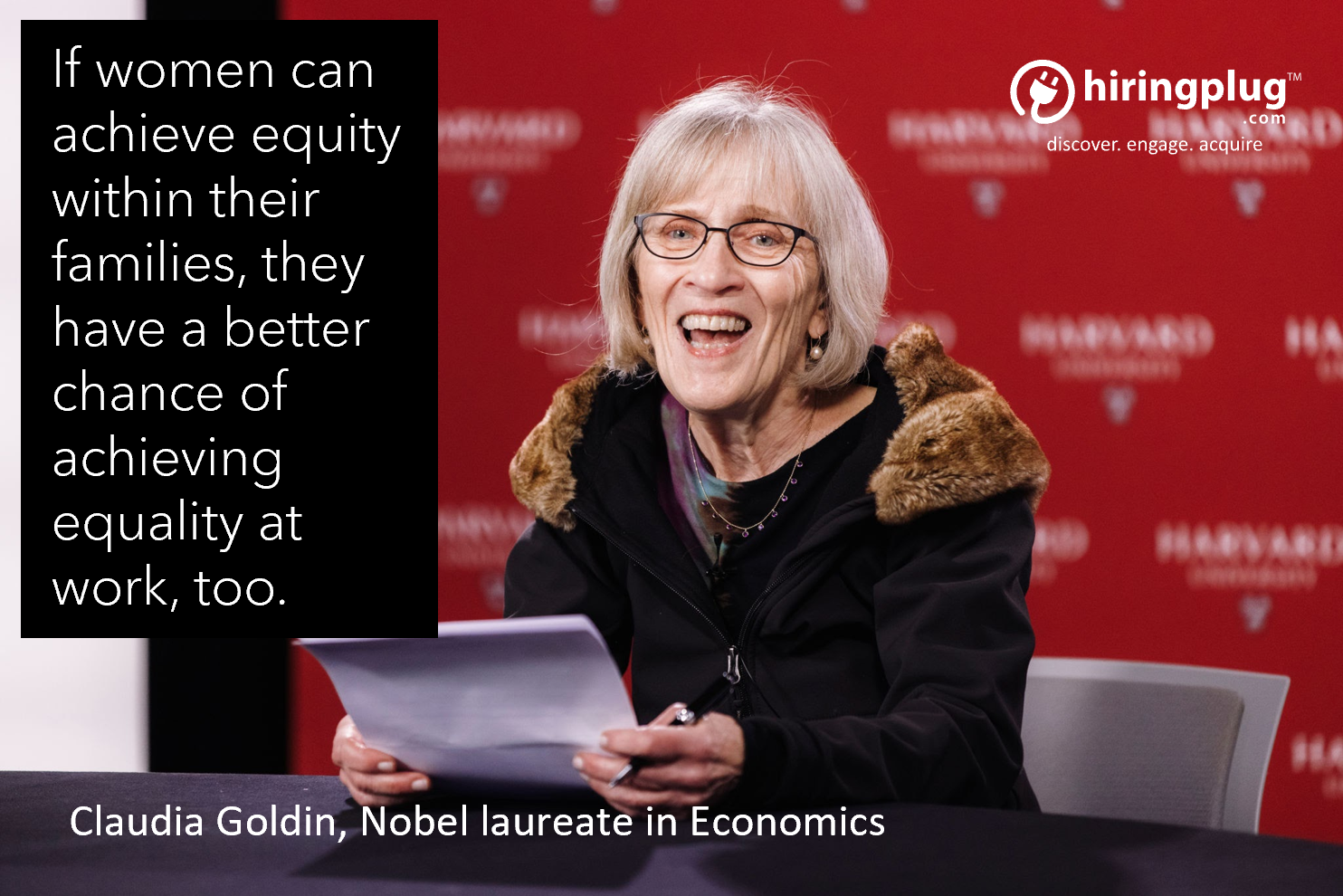If the idea of gender equality and pay parity matters to you, this is an important milestone.
This October, Claudia Dale Goldin became the first solo woman winner of the Nobel Prize in Economics. Officially called the “Sveriges Riksbank Prize in Economic Sciences in Memory of Alfred Nobel”, she won this for having advanced our understanding of women's labor market outcomes, as well as the root causes of the gender pay gap.
Goldin's research provides the first comprehensive account of American women’s earnings and job market outcomes through the centuries. She has shown that the process of closing the wage gap has been uneven throughout history, changing in line with social norms and women’s own expectations about their career prospects and roles at home.
Key Findings:
Human Capital Investment: Goldin's research highlights the significance of human capital investment in closing the gender pay gap. She emphasizes that women's career choices and investments in education and training play a pivotal role in achieving pay equality.
Occupational Sorting: Goldin's work has shown that occupational sorting, where women tend to enter fields that traditionally pay less, is a significant driver of gender pay disparities. Encouraging diversity and equal opportunities in high-paying professions is crucial.
Flexible Work Arrangements: Goldin's research has emphasized the importance of workplace flexibility, suggesting that accommodating work schedules can significantly improve diversity recruitment and retention, allowing individuals to balance work and family responsibilities.
Temporal Flexibility: Goldin's findings have underlined the importance of temporal flexibility, such as flexible work hours and remote work options, as tools to enhance diversity and promote pay equality.
Intersectionality: Goldin recognizes the intersectionality of gender and race in pay disparities. Her work emphasizes the importance of addressing these dual challenges to achieve true equality in the workplace.
This has vast societal implications. By understanding the problem and calling it by its right name, we can pave a better route forward. Her research has not only shed light on the historical roots of wage inequality but also dispelled misconceptions about women's contributions to the workforce.
Claudia Goldin's research has been instrumental in advancing our understanding of diversity recruitment and pay equality. Her findings underscore the importance of investment in human capital, occupational diversity, workplace flexibility, and addressing specific challenges like the motherhood penalty and intersectionality. By applying these insights, organizations and policymakers can take meaningful steps toward creating more inclusive and equitable workplaces. Now since there is no ambiguity or myth surrounding the gender pay gap, are we doing enough to close it?
This October, Claudia Dale Goldin became the first solo woman winner of the Nobel Prize in Economics. Officially called the “Sveriges Riksbank Prize in Economic Sciences in Memory of Alfred Nobel”, she won this for having advanced our understanding of women's labor market outcomes, as well as the root causes of the gender pay gap.
Goldin's research provides the first comprehensive account of American women’s earnings and job market outcomes through the centuries. She has shown that the process of closing the wage gap has been uneven throughout history, changing in line with social norms and women’s own expectations about their career prospects and roles at home.
“We are never going to have gender equality, or narrow the pay gap, until we have couple’s equity,” - Goldin
In the past, a significant portion of the disparity in income between genders could be attributed to variations in educational attainment and career selections.
Nonetheless, Goldin's research has demonstrated that the primary factor contributing to this income gap today is the differentiation between men and women holding identical job positions. This distinction predominantly emerges following the birth of their first child.
One of her most significant findings is that differences in pay and labor force participation cannot be attributed to biological differences, but to the division of unpaid caregiving and household labor between heterosexual couples. She argues that we will never achieve gender equality or narrow the pay gap until we have couple’s equity.
Key Findings:
Human Capital Investment: Goldin's research highlights the significance of human capital investment in closing the gender pay gap. She emphasizes that women's career choices and investments in education and training play a pivotal role in achieving pay equality.
Occupational Sorting: Goldin's work has shown that occupational sorting, where women tend to enter fields that traditionally pay less, is a significant driver of gender pay disparities. Encouraging diversity and equal opportunities in high-paying professions is crucial.
Flexible Work Arrangements: Goldin's research has emphasized the importance of workplace flexibility, suggesting that accommodating work schedules can significantly improve diversity recruitment and retention, allowing individuals to balance work and family responsibilities.
Motherhood Penalty: She has documented the "motherhood penalty," which is the decrease in earnings that many women experience after having children. This phenomenon underscores the need for policies that support working mothers and eliminate this penalty.A 50-50 couple, Goldin adds, “might be happier, but they would be leaving money on the table — and often, it’s a lot.”
Temporal Flexibility: Goldin's findings have underlined the importance of temporal flexibility, such as flexible work hours and remote work options, as tools to enhance diversity and promote pay equality.
Intersectionality: Goldin recognizes the intersectionality of gender and race in pay disparities. Her work emphasizes the importance of addressing these dual challenges to achieve true equality in the workplace.
This has vast societal implications. By understanding the problem and calling it by its right name, we can pave a better route forward. Her research has not only shed light on the historical roots of wage inequality but also dispelled misconceptions about women's contributions to the workforce.
Claudia Goldin's research has been instrumental in advancing our understanding of diversity recruitment and pay equality. Her findings underscore the importance of investment in human capital, occupational diversity, workplace flexibility, and addressing specific challenges like the motherhood penalty and intersectionality. By applying these insights, organizations and policymakers can take meaningful steps toward creating more inclusive and equitable workplaces. Now since there is no ambiguity or myth surrounding the gender pay gap, are we doing enough to close it?
Posted in : Leadership
Views : 12938
Leave a Comment
Hey there !
Author Details
Related Blogs
Popular Tags
Subscribe Now









